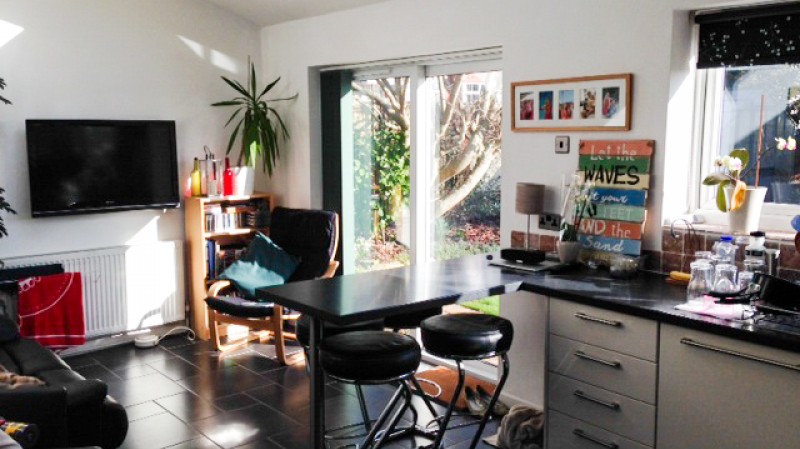You are here: Setting up a multipurpose room
With more of us than ever working remotely, we are having to rethink how we use the rooms in our homes. ‘Can I accommodate an office nook in the bedroom and should I?’ is an increasingly common question, and the answer is not always clear cut. A bedroom, with soft lighting and warm colours, is unlikely to help you stay alert through the working day. A breakfast bar in your kitchen is probably too tall for comfort, and your lounge will be packed with distractions.
Here is some food for thought on how you can adapt two of the most important rooms in your home — the lounge and the bedroom — for more flexible living.

The multipurpose lounge
Perhaps the most versatile room of all, the lounge is easily adapted to be more than just the place to which you retreat at the end of the day. Swap your settee for a sofa bed and, while you might not want to sleep there every night, it is a perfect ad-hoc bedroom for occasional visitors.
Naturally, a sofa bed needs around three times its depth every time you fold it out, but you can easily reclaim this space by mounting your TV on the wall or, if you want to recreate the cinema experience, swap it altogether for a ceiling-slung projector. If you want to take this second option, make sure the projector is fitted with an HDMI port and, if possible, USB power output. That way you can connect a streaming device, like Amazon’s Fire TV Stick or Google TV, the latter of which is effectively a revamped and much expanded Chromecast, which was released last month.
If your work is primarily done on a laptop, you can conceivably spend your nine-to-five in an armchair, but this won’t be good for your posture, long term. Office chairs, with swivel mechanisms, high backs and splayed feet aren’t attractive pieces of furniture, so consider something easier on the eye, like the Varier balans. This kneeling chair, with its bent beech wood frame, could be a real talking point for your lounge, and is available with a range of fabrics, leather and wool finishes to compliment your other furniture.
If you have a large living room, consider using curtains, open storage and dividers to differentiate different areas. This could have a beneficial effect, allowing you to focus on specific tasks depending on your surroundings. Ikea has some examples, which could inspire you.
The multipurpose bedroom
The biggest piece of furniture in most bedrooms is the bed, but that is easily solved by hiding it in a cupboard. Fold up beds aren’t just for studio flats: they are the perfect way to reclaim space that is entirely unused for more than half of each day. What you do with the floorspace you have recovered is up to you: it can be your home Pilates studio, a day suite or office.
Naturally, if you intend to work in your bedroom, you will need a desk, and there are space-saving options here, too. We love the Esme fold-down desk from Made, not only because it’s small and cute, but because the accompanying chests, floating shelves and side tables within the broader Esme collection will help bring the whole room together.
Equally fashionable, a ladder desk combines a compact workspace with shelves. Granted, you will be quite close to the wall, so you might want to pair it with some plants or even a mirror, but it is as neat as it is compact. And it’s good looking as well as being easy to ignore when the working day is over. So, too, is a discreet corner desk that makes use of awkward spaces and doesn’t leave you with clumsy corners to walk into.
As we said at the outset, the muted tones traditionally suited to bedrooms don’t always feel right in work-focused surroundings, but appropriate choice of lighting can help. Make your work nook brighter with help from a daylight bulb, which should help chase away the mid-afternoon slump, so you stay productive for longer.
A home and an office in one
If your plans for a multi-purpose room focus in part on home working, you may be entitled to claim against your tax for a proportion of your heating costs, depreciation and even mortgage. This could help offset the cost of setting up your hybrid working/living space.
Be careful, though, and talk to your accountant before making any claims — particularly if you are setting up a dedicated home office rather than a working nook in a larger room. Why? Because when it’s time to sell, you may find yourself liable to pay capital gains tax, which could reduce the funds available to spend on your next home.
If you are looking to make some home improvements, you may find some of these services useful
Builders
Find local help with a building project
Building Regulations
Find details of local experts who can help with Building Regulations
Architectural Design Services
Find local Architectural Design experts
Structural Inspections
Find an expert to carry out a structural inspection
Building Surveys
I want a local surveyor to do a Building Survey for me
Choose which Architectural service you require
If you are not sure which service you require, check out the options available...


